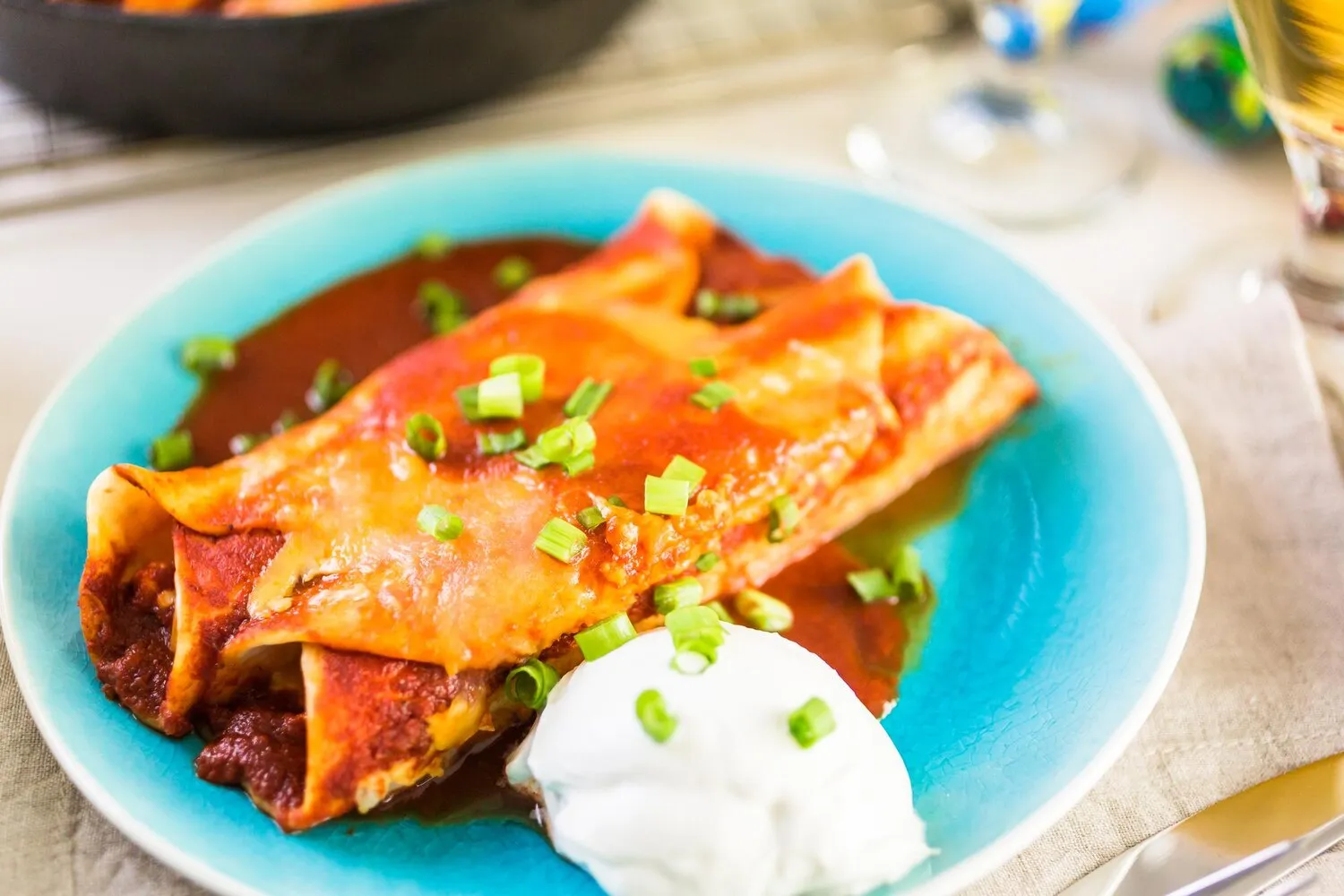
Chimichangas
Two flour tortillas filled with rice, beans, cheese, and your choice of protein (or vegetables). Deep-fried and topped with salsa, guacamole, and sour cream.
Nutrition Facts
* The % Daily Value (DV) tells you how much a nutrient in a serving of food contributes to a daily diet. 2,000 calories a day is used for general nutrition advice.
The exact origin of the chimichanga is debated, with claims coming from several restaurants in Arizona during the mid-20th century. The story commonly involves a cook accidentally dropping a burrito into a deep fryer and exclaiming a minced oath, quickly adapting to create what we know today.
Chimichangas, while originating in the US, are a significant part of Tex-Mex cuisine and the culinary landscape of the American Southwest. They represent a fusion of Mexican and American culinary influences and are often associated with casual dining and festive occasions.
Tex-Mex Staple
Chimichangas are a prominent dish in Tex-Mex cuisine, often found on the menus of Mexican-American restaurants. They showcase the Americanized adaptation of Mexican flavors and ingredients.
Comfort Food
The dish is often considered comfort food due to its rich flavors, hearty fillings, and satisfying textures. It's a popular choice for casual meals and celebrations.
Regional Variations
While the basic recipe remains consistent, regional variations exist in the type of protein used, the specific beans included, and the accompanying toppings. Some variations may also include additional ingredients like green chilies or jalapenos.
The chimichanga is a savory and satisfying dish that blends a mix of textures and tastes. It combines the soft interior of rice, beans, and protein with the crispy, deep-fried exterior, complemented by cool, creamy toppings and zesty salsa.
The primary flavor profile is a combination of savory, slightly spicy (depending on the salsa and protein), and rich. The fillings like rice and beans provide a hearty, earthy base. The protein, whether it's shredded chicken, beef, or pork, adds a meaty flavor and texture. The cheese contributes a melted, cheesy richness. The deep-frying process introduces a crispy, golden-brown exterior with a slightly oily flavor. The toppings of salsa, guacamole, and sour cream add contrasting textures (smooth, creamy, chunky) and complementary flavors (tangy, creamy, spicy, fresh).
Seal the Seams
Before deep-frying, ensure the seams of the tortilla are tightly sealed to prevent the filling from leaking out during cooking. A little water or egg wash can help.
Oil Temperature
Maintain the correct oil temperature (around 350°F or 175°C) for deep-frying to ensure a crispy exterior without burning. Use a thermometer to monitor the oil.
Don't Overfill
Avoid overfilling the tortilla, as this can make it difficult to roll and seal properly, leading to a messy frying process.
Topping Balance
Balance the richness of the fried tortilla and fillings with fresh, vibrant toppings like salsa, guacamole, and sour cream. These add brightness and acidity to the dish.
Explore additional Mexican-inspired dishes and restaurants
Explore Mexican-inspiredDiscover top dining spots and culinary experiences in Moncton.
Explore MonctonLearn more about the food culture, restaurant scene, and culinary heritage of Canada.
Explore Canada